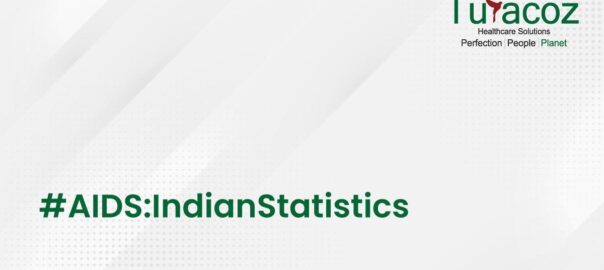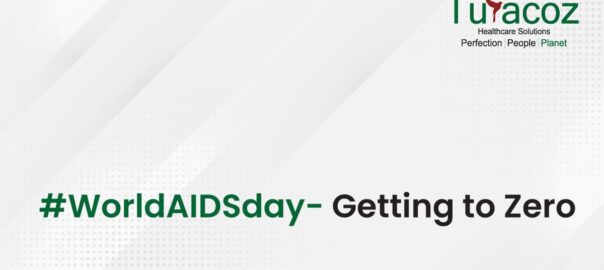It is believed that around 1920, a deadly virus crossed species from chimpanzees to humans in Kinshasa (Africa), and led to the beginning of an era full of illness, fear, and discrimination. The deadly virus was called human immune-deficiency virus or HIV. Over decades, the virus slowly spread to other parts of the world, and a large number of people became infected. Depressed immunity, huge number of infections, and high mortality rates were observed. In 1982, Centers for Disease Control and Prevention (CDC) used the term acquired immunodeficiency syndrome (AIDS) for the first time. AIDS was defined as “a disease at least moderately predictive of a defect in cell mediated immunity, occurring in a person with no known case for diminished resistance to that disease.” Soon, the disease became an epidemic and engulfed the whole world.
As per UNAIDS, the number of people living with HIV increased from 9 million in 1990 to 36.9 million in 2014. AIDS-related deaths also increased drastically from 320,000 in 1990 to 2 million in 2004-05. However, this led to emergence of global actions for management of AIDS and with more people receiving treatment, improvements could be seen. As a result, the number of deaths has been estimated to decrease to 1.2 million in 2014.
WHERE DOES INDIA STAND?
Globally, 15 countries account for nearly 75% of the people living with HIV, with the top 3 countries being South Africa (18%), Nigeria (9%), and India (6%). Being a densely populated country with a large number of people under poverty line, living in unhygienic conditions, or lacking awareness, AIDS is a major health concern in India. By 2013, 2.1 million people were estimated to be living with HIV in India. Out of this, there were approximately 140,000 children aged 0 to 14; 750,000 women aged 15 and above; and 1.9 million adults aged 15 years and above. The prevalence rate in adults was noted to be 0.3.
Let’s look at the regional variations: The distribution of HIV is heterogeneous throughout the country. As per National AIDS Control Organization (NACO), the highest prevalence has been noted in Nagaland (0.88%), followed by Mizoram (0.68%), Manipur (0.64%), Andhra Pradesh (0.59%), Karnataka (0.53%). Chhattisgarh (0.51%), Gujarat (0.50%), Maharashtra (0.40%), Delhi (0.40%), Punjab (0.37%), Bihar (0.33%), Rajasthan (0.32%), and Odisha (0.31%).
Who all are affected?
In India, female sex workers, men who have sex with men, transgender, and people who inject drugs have been identified as the core high-risk groups. They are at high risk of HIV infection and play a significant role in the HIV transmission to general population through sexual networks. Besides them, truck drivers and migrant workers can transmit infection as they have mobile working jobs and are more likely to come in contact with the high-risk groups like female sex workers.
| Population | National prevalence in 2011 |
| Female sex workers | 2.8% |
| Men who have sex with men | 4.43% |
| Transgender | 8.82% |
| People who inject drugs | 7.14% |
| Migrant workers | 0.99% |
| Truck drivers | 2.59% |
| Source: NACO Annual Report, 2014 | |
The sad part: Unfortunately, 64% of these people living with HIV were found to have no access to the treatment in 2013. This led to approximately 130,000 AIDS-related deaths in India, which accounts for 8% of the AIDS-related deaths in the world and 51% in Asia.
Looking at the brighter side: Even though AIDS is a major concern in India, the number of people living with AIDS has decreased from 2.4 million in 2005 to 2.1 million in 2013. Also, the estimated number of new infections has decreased from 160,000 in 2009 to 130,000 in 2013 (19% decline). A 38% decline has been noted in AIDS-related deaths between 2005 (210,000 deaths) and 2013 (130,000 deaths). Overall, the epidemic is slowing down in India.
And the credit goes to: Various prevention and treatment interventions launched by Government of India under the National AIDS Control Programme (NACP) have played an important role in fighting with AIDS. Its main objective has been to reduce new infections and provide care, support, and treatment to people with HIV or those who are in need. The number of centers providing antiretroviral (ART) treatment has increased from 25 in 2005 to 425 in 2014, and the number of patients receiving first-line ART has increased from 6,845 in 2005 to 768,000 in 2014. HIV counseling and testing services have also scaled-up in India: from 4,567 Integrated Counseling and Testing Centres in 2007-08 to 15,606 in 2013-14. Resources allocation through states has also increased from Rs. 733.04 crores in 2008-09 to Rs. 931.00 crores in 2013-14.
The road ahead: Although improvements have been seen, it is a long way ahead to attain an AIDS-free country. Fast-track targets have been established to secure ZERO new infections, ZERO discrimination, and ZERO AIDS-related deaths in the future. The global consensus is to aim for 90-90-90 by 2020, i.e. 90% of people living with HIV know their HIV status, 90% of people who know their status receive treatment, and 90% of people on HIV treatment have a suppressed viral load so that their immune system remains strong and they are no longer infectious.
| By 2020 | 90-90-90 treatment, ZERO discrimination |
| By 2030 | 95-95-95 treatment, ZERO discrimination |
Let’s just hope that the occurrence of AIDS keeps on dipping, and we attain ZERO infections!
Sources: NACO and UNAIDS
Turacoz Healthcare Solutions as a socially responsible company spreads the word and awareness and looks forward to collaboration or associations with other agencies/companies with similar goals and aspirations. We have a skilled and competent team of medical writers, clinicians, researchers and biostatisticians. Our clients include major pharmaceutical companies, hospitals and healthcare professionals. Our experience has been in supporting publications, creating regulatory documents, conducting observational studies, designing and creating for print and digital marketing as well as customizing sessions on medical writing.


